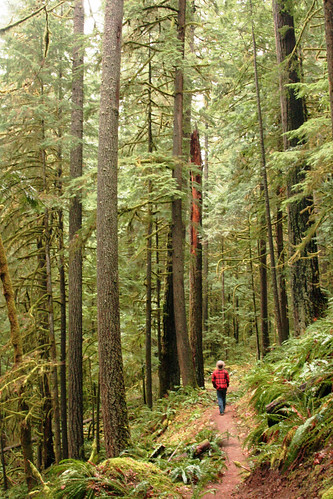
Two bow hunters recently discovered a marijuana grow site on the White River National Forest, one of the most visited forests in the country.
The site, located near Redstone, Colo., contained 3,375 marijuana plants with an estimated value of $8.4 million. Forest Service crews removed the plants, dismantled the irrigation system and removed items left in a make-shift camp used by the growers. Helicopters assisted by airlifting the plants and other debris associated with the illegal growing site from the area. No arrests have been made and the case remains under investigation.
“Growing marijuana on national forest lands will not be tolerated,” said Scott Fitzwilliams, forest supervisor for the White River National Forest. “These cultivation sites cause significant resource damage and endanger visitors who may stumble upon a large amount of marijuana with a large street value.”
The vast majority of the national forests are safe for visitors and employees. And while only a fraction of the National Forest System is affected by illegal marijuana cultivation, drug growers connected to organized crime are active in the nation’s national forests and it’s important for your safety to be aware of your surroundings.
“If you encounter a drug operation, back out immediately. Never engage the growers as these are extremely dangerous people. Leave the way you came in and make as little noise as possible,” cautioned David Ferrell, director of law enforcement and investigations for the Forest Service.
If you can identify a landmark or record a GPS coordinate, that’s very helpful. The growers may be present and may or may not know that you have found their operation. Get to a safe place and report the encounter to any uniformed member of the Forest Service or to your local law enforcement agency.
Here are some clues that you may have come across a marijuana cultivation site:
- The smell of marijuana, especially on hot days, is like a skunk.
- Hoses or drip lines located in unusual or unexpected places.
- A well-used trail where there shouldn’t be one.
- Voices coming from an unusual place.
- People standing along roads without vehicles present, or in areas where loitering appears
unusual. - Grow sites are usually found in isolated locations, in rough steep terrain (typically between 500 to 5,500 feet elevation.)
- Camps containing cooking and sleeping areas with food, fertilizer, weapons, garbage,
rat poison and/or dead animals. - Small propane bottles (so that the grower avoids detection of wood smoke.)
- Individuals armed with rifles out of hunting season.
Disturbances and impacts to the forests from illegal marijuana cultivation can cause extensive and long-term damage to ecosystems as well as impacting the supplies of public drinking water.
Growers destroy timber and natural vegetation to establish their gardens. They use dangerous rodenticides, herbicides and pesticides that are banned in the United States. They kill wildlife and destroy habitat and divert water from watersheds, streams, lakes and public drinking water supplies.
To learn more about how to safely use National Forest lands click here.

